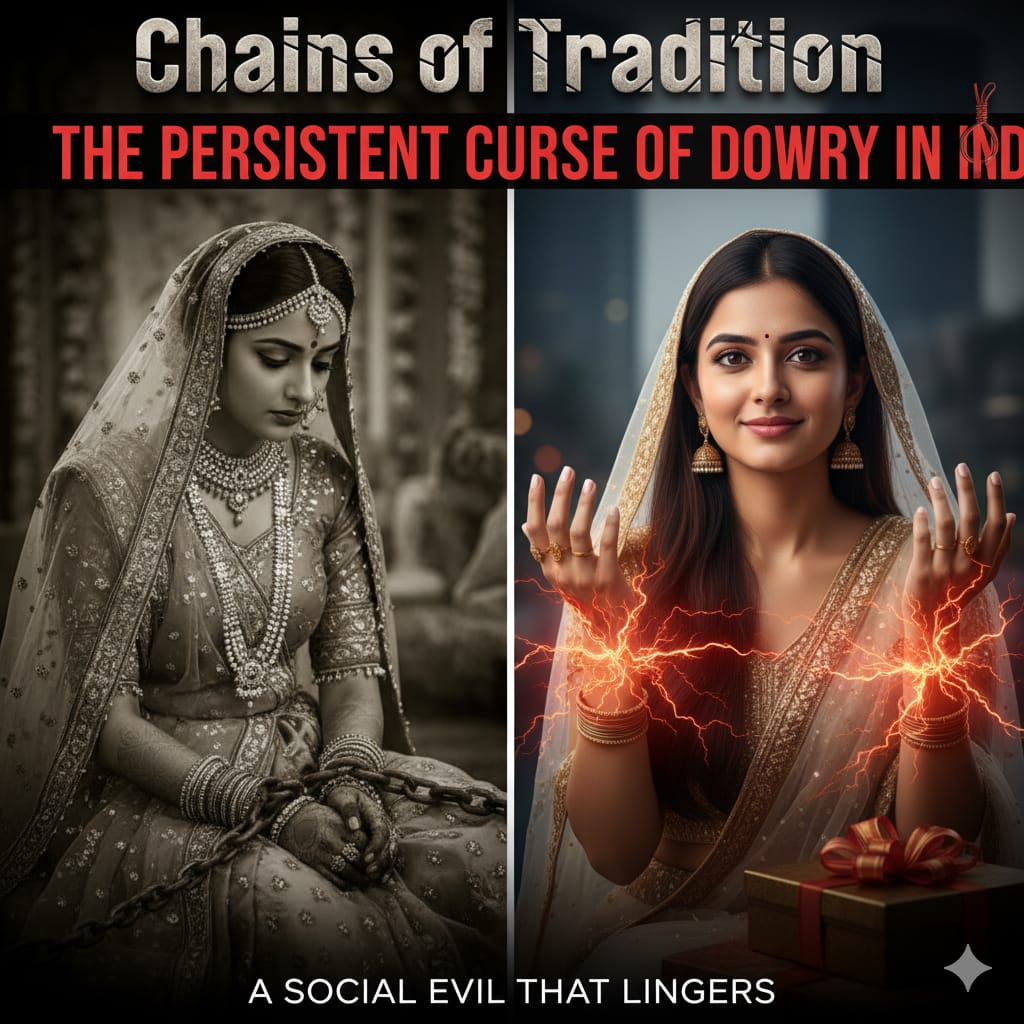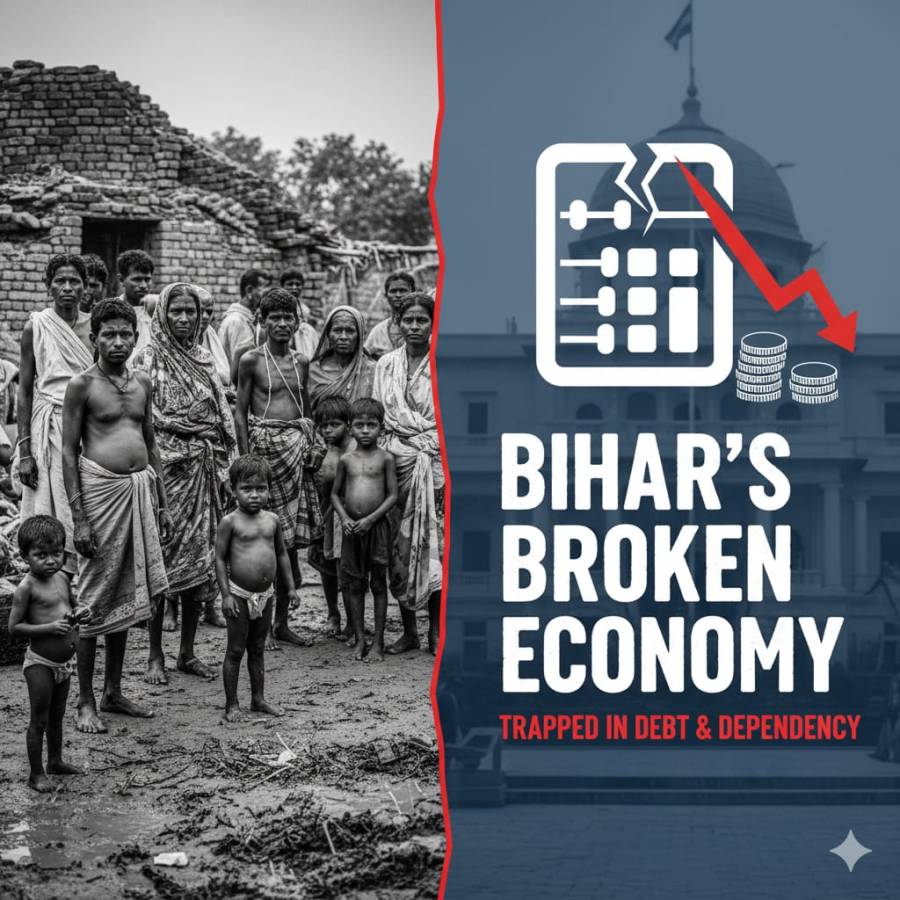
Some traditions, though invisible, weigh heavier than iron chains. Across India’s vast landscape, from urban towers to rural courtyards, the dowry system persists as a remnant of a bygone age. It lingers like a shadow, stifling aspirations and marking every girl child as a financial burden. Despite numerous laws aimed at its eradication, dowry remains deeply woven into the fabric of Indian society, muting the laughter of daughters and burdening the hearts of families.
A Daughter’s Worth in Gold and Rupees
From the moment a girl is born, whispers of her “price” begin. Not her laughter, intelligence, or potential, but the gold, cash, and gifts that will accompany her marriage dominate conversations. Dowry, cloaked as a “gift” or “custom,” becomes the cost of dignity in many communities. This deeply patriarchal tradition, now mutated into a societal monstrosity, continues to devastate families and lives.
In 2022 alone, over 6,450 women lost their lives to dowry-related violence, averaging nearly 18 deaths daily. More than 13,000 cases were registered under the Dowry Prohibition Act the same year, though countless instances remain unreported due to fear and stigma. These aren’t mere statistics—they are extinguished dreams, shattered families, and a collective failure to protect women from exploitation.
Dowry: The Weight on India’s Progress
As the world charges toward technological and economic breakthroughs, India remains paradoxically shackled by regressive practices like dowry. How can a nation aiming for global prominence suppress the potential of half its population? Women make up only 24% of India’s workforce, a figure that pales in comparison to nations that have embraced gender equity. The economic loss is immeasurable, not just in GDP terms but in missed opportunities for innovation and societal growth.
Imagine the impact if India’s daughters, unburdened by dowry, could pursue education, careers, and entrepreneurial dreams without hesitation. A country cannot hope to stand shoulder to shoulder with global powers if it sidelines its women.
A Cruel Irony in Modern Times
India’s simultaneous embrace of modern technology and adherence to outdated customs creates a cruel irony. Artificial intelligence now matches couples based on compatibility, yet dowry demands persist, measuring a marriage’s success in material wealth. As industries automate and modernize, the marriage market remains tethered to antiquated prejudices.
In an age of moon missions and medical miracles, why does the shadow of dowry loom over the lives of daughters?
The Battle of Law vs. Tradition
To its credit, the Indian government has acted against dowry. The Dowry Prohibition Act of 1961, strengthened by amendments, was designed to outlaw this practice. Yet the law often fails in implementation. Conviction rates remain abysmally low, highlighting the gap between legislative intent and societal action.
Why? Because laws can outlaw actions but cannot erase entrenched mindsets. Families, communities, and even educated individuals continue to perpetuate dowry, either through direct demands or tacit acceptance.
The Hidden Costs of Dowry
The financial burden of dowry often leaves families indebted, while the psychological toll can be lifelong. A bride’s life becomes a balancing act—between satisfying dowry demands and enduring the stigma of “falling short.” Beyond individual families, this practice stifles national growth. When families prioritize saving for dowries over educating daughters, the entire nation loses a vital force of progress.
A Vision for Change
Breaking the chains of dowry begins at home. Families must challenge this tradition by refusing to participate in it. Educating daughters, empowering them with financial independence, and raising sons to value equality over material wealth are critical steps toward change.
Grassroots movements, campaigns like #StopDowry on social media, and advocacy by organizations such as the All India Women’s Conference offer hope. Their success stories show that change, though slow, is possible. Youth activism, particularly among urban millennials, also signals a cultural shift.
India’s daughters deserve better. The fight against dowry is not just a feminist cause; it is a national imperative. The nation’s economic and social future depends on its ability to rise above regressive traditions. For every dowry negotiation tolerated, a girl’s potential is extinguished. For every dowry death ignored, society’s moral fabric unravels further.
Let dowry become a relic of history, a story told with disbelief to future generations. Let this nation, proud of its heritage and aspirations, shed the chains of this cruel custom and fully embrace the dignity and potential of its women. This is not just a fight for women—it is a fight for India’s soul.






















Dr.Barun Kumar Mishra
11 months agoVery useful 👍